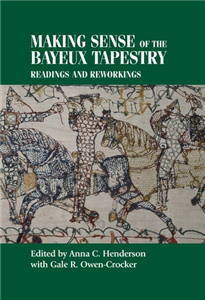Your Search Results
-
Kia Persia Literary Agency
KIA Literary Agency was founded in 2002 in Tehran with the aim of promoting and supporting fine literary works in all forms throughout the world. It brings about opportunities for authors, illustrators, publishers, translators, and those involved in this field to meet their counterparts. And at the same time, it introduces them to the world and will inform them of all the related events which take place in the world of art and literature.
View Rights Portal
-
Promoted Content
-
Promoted ContentMay 1994
Common-sense-Kompetenz
Überlegungen zu einer Theorie des »sympathischen« und »natürlichen« Meinens und Verstehens
by Helmuth Feilke
Wie ist das fast »selbstverständliche« Funktionieren menschlicher Kommunikation möglich angesichts bzw. trotz der enormen Kontingenz, die erstens die individuelle Konstruktivität menschlicher Wahrnehmung und Kognition, zweitens die Generativität der grammatischen Kompetenz und drittens die Komplexität hochvariabler Kontexte für das Meinen und Verstehen eröffnen? Wie kommt angesichts dieser Spielräume eine hinreichend gleichsinnige Koonentierung der sozialen Akteure in der Kommunikation zustande? Inwiefern ist unsere sprachliche Kompetenz genau dieser Problematik angepaßt und durch sie bestimmt? Die Common sense-Kompetenz ist der Versuch, auf diese Fragen eine sprachwissenschaftliche Antwort zu geben. Zugleich wird damit der Anspruch erhoben, im Blick auf die Fragen des Zusammenhangs von Kommunikation, Kognition und Kompetenz die Sprachtheorie in ihr Recht zu setzen.
-
 Trusted Partner
Business, Economics & LawJuly 2024
Trusted Partner
Business, Economics & LawJuly 2024Act now
by Common Sense Policy Group, Kate Pickett, Danny Dorling, Richard Wilkinson
-
 Trusted Partner
Medicine
Trusted Partner
MedicineHumor in Psychiatric Care
by Jonathan Gutmann
How can humor be used to engage with and help people suffering from mental illness? This practical handbook explains the concept of humor in psychiatric treatment and sets out the case for employing it. The author outlines how nurses can assess who might benefit from the use of humor and for whom it would be out of place, and provides a toolkit of humorous interventions for daily nursing practice. Target Group: Practicing nurses, psychiatric nurses, care clowns
-
 Trusted Partner
Humanities & Social SciencesSeptember 2020
Trusted Partner
Humanities & Social SciencesSeptember 2020Law in popular belief
by Anthony Amatrudo, Regina Rauxloh
-
 Trusted Partner
Literature & Literary StudiesMay 2023
Trusted Partner
Literature & Literary StudiesMay 2023Creating character
Theories of nature and nurture in Victorian sensation fiction
by Helena Ifill
This book explores the ways in which the two leading sensation authors of the 1860s, Mary Elizabeth Braddon and Wilkie Collins, engaged with nineteenth-century ideas about personality formation and the extent to which it can be influenced either by the subject or by others. Innovative readings of seven sensation novels explore how they employ and challenge Victorian theories of heredity, degeneration, inherent constitution, education, upbringing and social circumstance. Far from presenting a reductive depiction of 'nature' versus 'nurture', Braddon and Collins show the creation of character to be a complex interplay of internal and external factors. Drawing on material ranging from medical textbooks, to sociological treatises, to popular periodicals, Creating character shows how sensation authors situated themselves at the intersections of established and developing, conservative and radical, learned and sensationalist thought about how identity could be made and modified.
-
 Trusted Partner
Trusted Partner
-
 Trusted Partner
PsychologyApril 2018
Trusted Partner
PsychologyApril 2018What is “Good” Dementia Care?
by Christoph Held
People with dementia experience their condition as a big change in which, for example, new events are not linked to existing experiences and wishes, thoughts, and actions can no longer be connected to each other. This kind of experience of the self, due to the intergative function of the brainbeing temporarily or permanently lost, is called dissociative self-experience. Based on this understanding of dementia, the author develops an approach to effectively understand and support people with dementia in everyday activities. Typical everyday situations and behaviours are presented and reflected on in a practical context.
-
 Trusted Partner
Trusted Partner
-
 Trusted Partner
Trusted Partner
-
 Trusted Partner
Humanities & Social SciencesJanuary 2026
Trusted Partner
Humanities & Social SciencesJanuary 2026Humour, subjectivity and world politics
by Alister Wedderburn
-
 Trusted Partner
The ArtsAugust 2010
Trusted Partner
The ArtsAugust 2010Art, museums and touch
by Fiona Candlin, Amelia Jones, Marsha Meskimmon
Art, museums and touch examines conceptions and uses of touch within arts museums and art history. Candlin deftly weaves archival material and contemporary museology together with government policy and art practice to question the foundations of modern art history, museums as sites of visual learning, and the association of touch with female identity and sexuality. This remarkable study presents a challenging riposte to museology and art history that privileges visual experience. Candlin demonstrates that touch was, and still is, crucially important to museums and art history. At the same time she contests the recent characterisation of touch as an accessible and inclusive way of engaging with museum collections, and argues against prevalent ideas of touch as an unmediated and uncomplicated mode of learning. An original and wide-ranging enquiry, this book is essential reading for scholars and students of museum studies, art history, visual culture, disability, and for anyone interested in the cultural construction of the senses. ;
-
 Trusted Partner
December 2023
Trusted Partner
December 2023Feel-Good Productivity
Produktiv sein ohne Stress – und mehr vom Leben haben
by Ali Abdaal
-
 Trusted Partner
Trusted Partner
-
 Trusted Partner
The ArtsJuly 2016
Trusted Partner
The ArtsJuly 2016Making sense of the Bayeux Tapestry
Readings and reworkings
by Anna Henderson, Bill Sherman
This book aims to make sense of the Bayeux Tapestry by bringing together answers to a number of questions which this famous hanging presents to the viewer. How did the embroiderers organise the stitching of the Bayeux Tapestry? Are its limited colours used with greater sophistication than viewers have recognised? What do we know of the Tapestry's supporting cast: naked figures in the margins and clerics present at events in the main register? Can we learn anything about the original purpose of the Tapestry from detailed examination of Bayeux Cathedral's 1476 Inventory, the first known reference to the Tapestry's existence? This book combines up-to-the-minute research with an introduction that draws on the contributors' personal observations in order to interrogate the Tapestry's enduring value. Bringing together contributions from leading specialists and newer voices in the field, it will be essential reading for students and scholars of the Bayeux Tapestry, medieval art and culture. ;
-
 Trusted Partner
The ArtsNovember 2022
Trusted Partner
The ArtsNovember 2022In good taste
How Britain’s middle classes found their style
by Ben Highmore, Christopher Breward
In postwar Britain, journalists and politicians prophesised that the class system would not survive a consumer culture where everyone had TVs and washing machines, and where more and more people owned their own homes. They were to be proved entirely wrong. In good taste charts how class culture, rather than being destroyed by mass consumption, was remade from flat-pack furniture, Mediterranean cuisine and lifestyle magazines. Novelists, cartoonists and playwrights satirised the tastes of the emerging middle classes, and sociologists claimed that an entire population was suffering from status anxiety, but underneath it all, a world was being constructed out of duvets, quiches and mayonnaise, easy chairs from Habitat, white emulsion paint and ubiquitous well-scrubbed, second-hand pine kitchen tables. This was less a world of symbolic goods and more an intimate environment alive with new feelings and attitudes.
-
 Trusted Partner
March 2011
Trusted Partner
March 2011How does it feel
Das Bob-Dylan-Lesebuch
by Herausgegeben von Theweleit, Klaus; Beiträge von Theweleit, Klaus; Beiträge von Rotolo, Suze; Beiträge von Hentoff, Nat; Beiträge von Gray, Michael; Beiträge von Gill, Andy; Beiträge von Winkler, Willi; Beiträge von Gleason, Ralph J.; Beiträge von Thompson, Hunter S.; Beiträge von Diederichsen, Diedrich; Beiträge von Roos, Theo; Beiträge von Heidkamp, Konrad; Beiträge von Thompson, Toby; Beiträge von DeLillo, Don; Beiträge von Shepard, Sam; Beiträge von Mellers, Wilfrid; Beiträge von Heidenreich, Elke; Beiträge von Marcus, Greil; Beiträge von Langenbacher, Andreas; Beiträge von Scobie, Stephen; Beiträge von Wilentz, Sean; Beiträge von Kemper, Peter; Beiträge von Klein, Richard; Beiträge von Detering, Heinrich
-
 Trusted Partner
Trusted Partner
-
 Trusted Partner
May 2023
Trusted Partner
May 2023Doc Felix – Feel good
Gesund, entspannt und glücklich – ich zeig dir, wie es geht
by Felix M. Berndt
-
 Trusted Partner
2025
Trusted Partner
2025Among Neighbours
The strangest relationship of our lives
by Bernd Imgrund
There are many things in life that we are (more or less) free to choose: our circle of friends, our workplace, our place of residence. However, we have to take some communities as they come: We cannot choose our family or our neighbours, for example. Why this does not only lead to the much-vaunted idyllic sense of belonging and what tensions forced social relationships can cause: This is the subject of this fascinating collection of essays by Bernd Imgrund. It sheds light on a piece of social history that we all know from our own experience: who hasn't had an argument with their immediate neighbour or made fun of the residents of the neighbouring district? But it is by no means only negative aspects that characterise neighbourly relations. Pride in one's neighbourhood, help within a village community: the many advantages of a social community, its importance and its representation in art and literature have also found their way into this book.
































